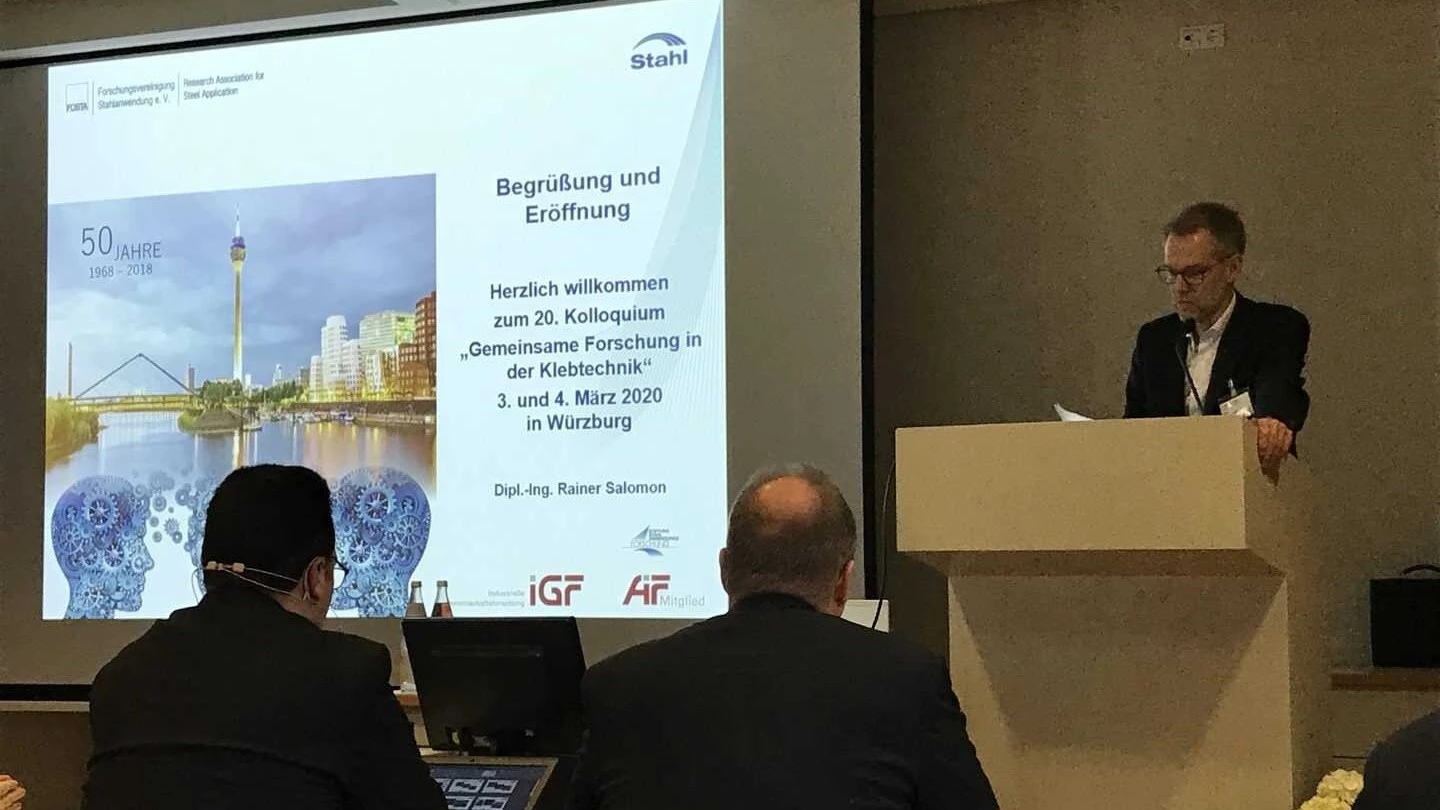
25.03.2020 by Milena Riedl
Информация с конференции по адгезивным технологиям в Германии
В 20-й раз в Вюрцбурге (Германия) прошел коллоквиум "Совместные исследованияarcчасов в технологии адгезивного склеивания". 230 участников вместе обсудили результаты своих исследованийarch, новые разработки и проблемы. Из множества интересных и содержательных презентаций первого дня были выявлены четыре тенденции, указывающие на будущее.
В 20-й раз в Вюрцбурге (Германия) прошел коллоквиум "Совместные исследованияarcч в технологии адгезивного склеивания", организованный компанией Dechema e.V. и Объединенным комитетом по технологии адгезивного склеивания.arcarcВ этом году 230 участников из известных компаний и институтов обсудили результаты своих исследований, новые разработки и проблемы.на основе совместно разработанной дорожной карты были представлены текущие проекты по темам совершенствования производства, прогнозирования эффектов старения и поведения при динамических нагрузках, а также валидации моделей и методов моделирования. Рынок клеев является очень large и важным рынком в Германии с оборотом около 1.в глобальной перспективе во всем мире потребляется почти 14 миллионов тонн клеев, а наиболее важными отраслями являются транспорт, упаковка, электроника и строительство. Из множества интересных и содержательных презентаций стали видны следующие тенденции:
- Клеи на биологической основе продолжают представлять интерес, поскольку рынок клеев в меньшей степени зависит от цен, чем традиционная переработка пластмасс, и поскольку необходимые объемы производства medium могут быть покрыты за счет возобновляемого сырья (источник: Fraunhofer IFAM).
- Для балансаCO2 очень важной переменной является толщина слоя клея. Даже если производство и переработка такого клея, как эпоксидный или полиуретановый, имеет large GWP (потенциал парникового потепления), малая толщина слоя способствует тому, что GWP при индивидуальном применении очень низкий (источник: tff, Университет Касселя).
- Многоматериальные конструкции становятся все более популярными, например, высокая стоимость производства углепластика приводит к появлению концепций гибридизации, в которых нужный материал используется в нужном месте (источник: LWF, Университет Падерборна).
- Клеи и клейкие ленты с предварительным покрытием становятся все более востребованными и разрабатываются, поскольку можно легко обеспечить воспроизводимое нанесение (источник: различные производители и институты).
- Модели для проектирования клеевых соединений между гибридными материалами уже были неоднократно проверены и применяются на практике. После этой работы прогнозирование срока службы при динамических и ударных нагрузках достигло большого прогресса в моделировании, а также в измерительной технике для определения характерных значений.